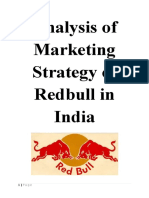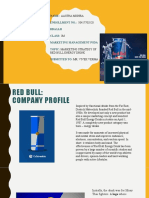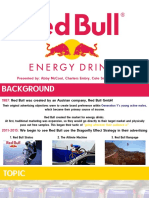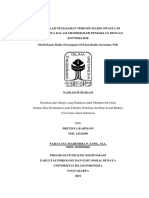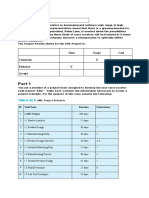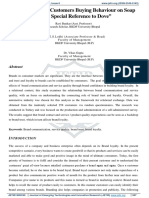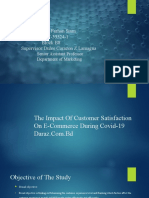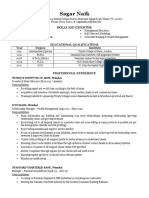0% found this document useful (0 votes)
91 views23 pagesRedBull Project Awadhes
This document provides an analysis of Red Bull, including its history as an energy drink company founded in 1987 in Austria, its business model focused on extreme sports marketing and global distribution, and key findings about its financial performance and competitive position as the leading global energy drink brand.
Uploaded by
avadhesh kumarCopyright
© © All Rights Reserved
We take content rights seriously. If you suspect this is your content, claim it here.
Available Formats
Download as DOCX, PDF, TXT or read online on Scribd
0% found this document useful (0 votes)
91 views23 pagesRedBull Project Awadhes
This document provides an analysis of Red Bull, including its history as an energy drink company founded in 1987 in Austria, its business model focused on extreme sports marketing and global distribution, and key findings about its financial performance and competitive position as the leading global energy drink brand.
Uploaded by
avadhesh kumarCopyright
© © All Rights Reserved
We take content rights seriously. If you suspect this is your content, claim it here.
Available Formats
Download as DOCX, PDF, TXT or read online on Scribd
/ 23









